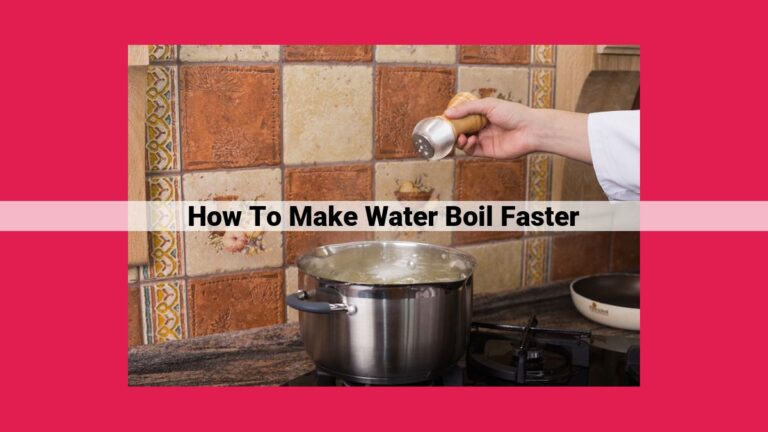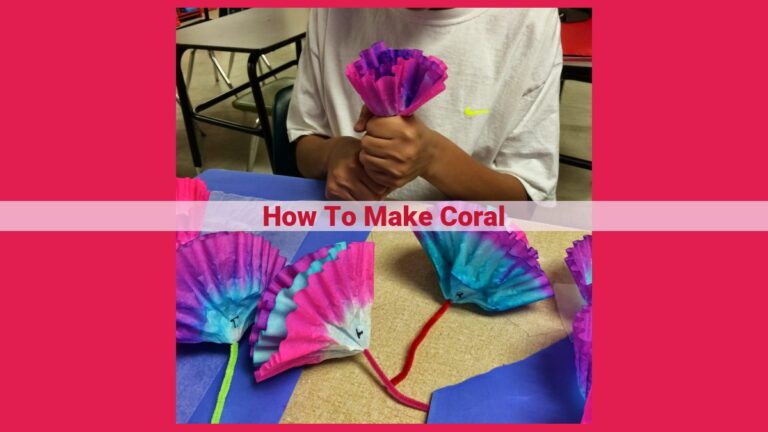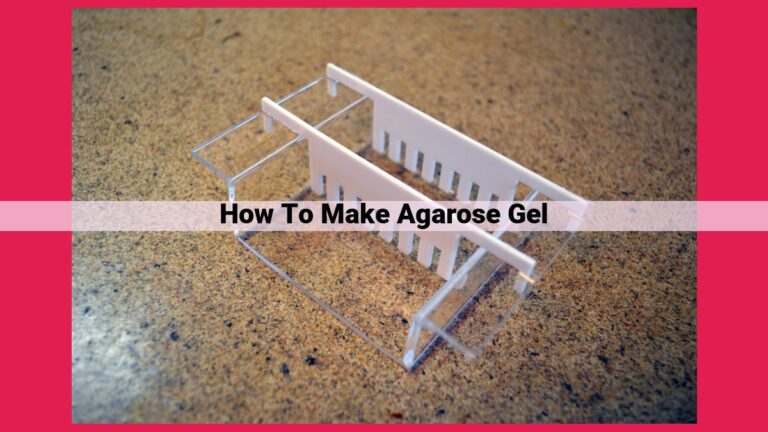Comprehensive Guide To Wet-To-Dry Dressing Change: Promoting Wound Healing Effectively

A wet-to-dry dressing change involves using a wet dressing to hydrate and cleanse a wound, followed by a dry dressing to absorb excess moisture. It includes gathering necessary materials, preparing the patient and environment, assessing the wound, cleansing it, applying wet and dry dressings, securing them, monitoring the patient, and documenting the procedure. Wet dressings promote wound healing by providing moisture, while dry dressings absorb exudate, preventing maceration and infection.
Wet-to-Dry Wound Dressing Change: A Step-by-Step Guide for Optimal Wound Care
1. What is a Wet-to-Dry Wound Dressing Change?
A wet-to-dry wound dressing change is an essential procedure in wound care that involves alternating between moist and dry dressings to promote healing. This technique creates a moist wound environment that facilitates cell proliferation and tissue regeneration while absorbing excess drainage and preventing infection.
2. Materials Required
- Sterile gloves
- Sterile gauze pads
- Saline solution or wound cleanser
- Debridement scissors or forceps (if necessary)
- Antiseptic wipes
- Antimicrobial or occlusive dressing (optional)
- Tape or bandage
3. Patient Preparation
- Obtain informed consent: Explain the procedure to the patient and obtain their agreement.
- Manage pain: Administer pain medication as prescribed.
- Position the patient comfortably: Place the patient in a position that provides easy access to the wound.
- Ensure privacy: Draw the curtains or close the door to provide a private and comfortable space.
Comprehensive List of Materials Required for a Wet-to-Dry Wound Dressing Change
Materials for Patient Preparation:
- Consent form: Obtain informed consent from the patient before proceeding with the procedure.
- Pain medication: If the patient experiences pain, administer appropriate analgesics to manage their discomfort.
- Exam gloves: Wear clean, non-sterile gloves to maintain aseptic technique.
- Towels and privacy screen: Protect the patient’s modesty and privacy during the procedure.
- Patient warming blanket: Provide warmth and comfort to the patient during the dressing change.
Materials for Environment Preparation:
- Hand sanitizer: Maintain hand hygiene to prevent cross-contamination.
- Personal protective equipment (PPE): Protect yourself with gloves, a gown, a mask, and a face shield or goggles.
- Clean work surface: Ensure that the work area is clean and disinfected before starting the procedure.
- Biohazard waste container: Dispose of contaminated materials safely and appropriately.
Materials for Wound Assessment and Cleansing:
- Sterile gloves: Wear sterile gloves to minimize the risk of infection.
- Saline solution: Use normal saline to irrigate the wound and cleanse the surrounding area.
- Cotton-tipped applicators or gauze pads: Gently clean the wound and remove exudate.
- Wound measuring ruler: Measure the wound’s length, width, and depth to track healing progress.
- Wound culture kit: If necessary, collect a wound culture to identify the presence of infection.
Materials for Wound Packing (Optional):
- Gelatin foam: Absorbs exudate and promotes granulation tissue formation.
- Calcium alginate: Controls bleeding and creates a moist wound environment.
- Packing forceps: Use sterile forceps to place and remove wound packing materials.
Materials for Dressing Application:
- Wet gauze dressings: Moistens the wound bed and facilitates debridement.
- Dry gauze dressings: Absorbs excess exudate and prevents maceration.
- Antimicrobial dressings: Prevent infection by releasing antimicrobial agents into the wound bed.
- Occlusive dressings: Promote moist wound healing by creating a barrier against moisture loss.
Materials for Taping:
- Adhesive tape: Secure the dressings and prevent movement that could disrupt wound healing.
- Non-stick pads: Protect the skin from irritation caused by adhesive tape.
- Scissors: Cut the tape to the appropriate length to minimize discomfort.
Materials for Monitoring:
- Stethoscope and blood pressure cuff: Monitor the patient’s vital signs during and after the procedure.
- Wound care checklist: Track the patient’s progress and assess the effectiveness of the dressing change.
- Pain assessment scale: Monitor the patient’s pain level and adjust the pain management plan as needed.
Ensuring Patient Comfort and Confidentiality in Wound Dressing Changes
Ensuring Patient Consent
Before commencing any wound care procedure, it’s crucial to obtain informed consent from the patient. This involves thoroughly explaining the purpose and steps involved in the wet-to-dry dressing change. The patient should fully understand the rationale and potential benefits of the procedure.
Pain Management
Wound care can often be uncomfortable or even painful. To minimize discomfort, healthcare professionals may administer pain medication or employ non-pharmacological pain relief techniques such as relaxation exercises and distraction.
Proper Positioning
Positioning the patient appropriately during the dressing change is essential for both their comfort and safety. The patient should be placed in a comfortable and secure position that allows for easy access to the wound. Proper positioning also helps prevent strain or injury to the patient.
Privacy
Maintaining patient privacy is paramount during wound care procedures. This involves providing a private and respectful environment where the patient feels comfortable discussing their condition and exposing their wound. Healthcare professionals should ensure that curtains or screens are used to shield the patient from view and that conversations are conducted in a discreet manner.
Importance of Hand Hygiene, PPE, Clean Environment, and Proper Waste Disposal
In the world of wound care, cleanliness and infection prevention are paramount. When performing a wet-to-dry wound dressing change, these principles guide every step to ensure the patient’s well-being and optimal wound healing.
Hand Hygiene: The First Line of Defense
Before touching the patient or the wound, thorough hand hygiene is essential. Washing your hands with soap and water, or using an alcohol-based hand sanitizer, eliminates surface contaminants, reducing the risk of introducing bacteria into the wound.
Donning Personal Protective Equipment (PPE)
To protect both the patient and the health care provider, PPE must be worn during the procedure. Masks, gloves, and gowns provide barriers against microorganisms, preventing cross-contamination.
Ensuring a Clean Environment
The dressing change area should be well-lit and well-ventilated, free of clutter and debris. All surfaces should be disinfected prior to use, and linens should be clean and sterile. An unclean environment harbors bacteria that can easily compromise the wound.
Proper Waste Disposal
Used dressings, gloves, and other contaminated materials must be disposed of safely to prevent the spread of infection. Designated sharps containers and wastebaskets lined with biohazard bags are essential for proper waste management.
By adhering to these strict infection control measures, you create a safe and hygienic environment for the patient and prevent the spread of harmful microorganisms. Remember, cleanliness is not just a rule but a vital part of wound care, promoting healing and minimizing complications.
Inspection, palpation, measurement, wound classification, and wound culture (if necessary).
5. Wound Assessment: Unveiling the Wound’s Story
Before embarking on the delicate task of dressing a wound, it’s imperative to conduct a thorough assessment, gaining insights into its character and needs.
-
Inspection: Observe the wound’s appearance, noting its size, shape, edges, and surrounding skin. This initial glance can provide clues about the wound’s stage and potential causes.
-
Palpation: Gently touch the wound to assess its temperature, tenderness, and firmness. These tactile cues can reveal the presence of inflammation, infection, or necrotic tissue.
-
Measurement: Accurately measure the wound’s length, width, and depth. Tracking these dimensions helps monitor its progression and identify any changes.
-
Wound Classification: Classify the wound based on its characteristics. This classification guides the selection of appropriate dressings and treatment strategies.
-
Wound Culture (if necessary): If signs of infection are present, a wound culture is essential to identify the causative microorganisms and guide antibiotic therapy.
Wound Cleansing: A Crucial Step in Wound Care
When it comes to effective wound management, cleansing is paramount. This meticulous process involves meticulous removal of debris, microorganisms, and any other detrimental elements from the wound.
Irrigation with Saline: The Gentle Sweep
Using a sterile saline solution, gently irrigate the wound with a syringe or irrigation device. This soothing stream flushes out contaminants and loosens any stubborn debris.
Debridement of Necrotic Tissue: Removing the Deadweight
Necrotic tissue, characterized by its dark and lifeless appearance, can hinder wound healing. Using surgical scissors or other specialized instruments, this unhealthy tissue is carefully removed.
Wound Bed Preparation: A Canvas for Healing
Once the wound is cleansed, the wound bed, the exposed underlying tissue, is prepared for the healing process. This may involve gentle debridement (removing any remaining debris), smoothing out irregularities, and applying topical agents to promote a moist environment conducive to healing.
Wound Packing: A Vital Skill for Wound Care
In the realm of wound care, wound packing stands as a crucial technique for managing challenging wounds that require additional support. It involves carefully filling a wound with specialized materials to facilitate healing and promote optimal outcomes.
When indicated, wound packing becomes an essential intervention in the following scenarios:
- Deep or tunneling wounds: Wounds that extend beyond the surface require packing to provide support and promote granulation tissue formation.
- Wounds with significant exudate: Excessive fluid within a wound can impede healing. Packing helps absorb this exudate, creating a drier wound bed.
- Infected wounds: Packing can deliver antimicrobials directly to the wound, aiding in infection control and preventing further damage.
- Wounds that require debridement: Packing can facilitate the removal of necrotic tissue, creating a clean and healthy wound bed for healing.
Selecting the Right Materials
The choice of packing materials depends on the specific wound characteristics. Common options include:
- Alginates: These natural materials absorb high volumes of exudate, creating a moist wound environment.
- Collagens: Derived from animal or human sources, collagens provide a matrix for cell growth and stimulate wound healing.
- Hydrogel dressings: These gels keep the wound moist, promote autolytic debridement, and reduce pain.
- Antimicrobial dressings: These dressings release antibiotics or antiseptics to fight infection.
Packing Techniques
Proper packing techniques ensure effective wound healing:
- Gentle insertion: Insert the packing material gently into the wound, avoiding damage to delicate tissues.
- Loose packing: Fill the wound loosely, allowing space for drainage.
- Secure fixation: Secure the packing in place with appropriate dressings and taping.
- Regular monitoring: Assess the wound regularly and change the packing as needed to maintain a clean and moist environment.
By understanding the indications, selecting the right materials, and applying appropriate packing techniques, healthcare professionals can enhance wound healing, reduce complications, and improve patient outcomes.
Wound Dressing 101: A Comprehensive Guide to Wet-to-Dry Technique
As you embark on the journey of wound care, understanding the wet-to-dry dressing change technique is crucial. This comprehensive guide will guide you through every step of this essential procedure.
The Purpose of Wet-to-Dry Wound Dressing
In this technique, wet gauze dressings are used to moisturize the wound bed and promote healing. After a period of time, dry gauze dressings are applied to absorb excess moisture. This alternating approach creates an optimal healing environment.
Essential Equipment and Materials
Gather the following:
- Wound dressings (wet gauze, dry gauze, antimicrobial, occlusive)
- Saline solution
- Sterile gloves
- Forceps
- Scissors
- Tape
Preparing the Patient
Begin by obtaining consent and managing pain. Position the patient comfortably and respect their privacy.
Creating a Clean Environment
Wash your hands thoroughly and don personal protective equipment (PPE). Ensure a clean workspace and follow proper waste disposal practices.
Assessing the Wound
Carefully inspect, palpate, and measure the wound. Document its classification and consider culturing if necessary.
Wound Cleansing
Irrigate the wound with saline solution. Debride any necrotic tissue. Prepare the wound bed by removing foreign objects or liquids.
Optional: Wound Packing
In cases of deep wounds, packing materials may be used to absorb exudate and promote healing.
Dressing Application
Select the appropriate dressings based on the wound’s needs:
- Wet gauze dressings: Moisturizing and protecting
- Dry gauze dressings: Absorbing excess moisture
- Antimicrobial dressings: Preventing infection
- Occlusive dressings: Promoting moist wound healing
Securely Taping the Dressings
Securely tape the dressings to prevent displacement. Avoid constricting the wound or impairing circulation.
Monitoring the Patient
Observe the wound for signs of infection. Monitor vital signs and assess pain. Track wound healing progress.
Diligent Documentation
Thoroughly document the wound assessment, dressing change procedure, observations, and care plan.
Dressing Application: Taping
In the delicate dance of wound care, securing dressings with tape plays a crucial role. Proper taping techniques not only ensure the dressing remains firmly in place but also prevent discomfort and potential constriction.
Imagine a symphony of gauze and tape, each element harmonizing to create a protective shield around the wound. Wet gauze dressings gently moisten the wound bed, while dry gauze dressings absorb excess exudate. Antimicrobial dressings stand guard against infection, and occlusive dressings promote a moist wound environment conducive to healing.
As you carefully apply the dressings, choose hypoallergenic tape to minimize skin irritation. Begin by anchoring the tape on healthy skin around the wound, creating a secure foundation. Avoid placing tape directly over the wound itself.
With gentle hands, smooth the tape over the dressing, ensuring it adheres securely without causing any tightness. Pay special attention to skin creases and edges, where dressings tend to loosen.
Remember, the goal of taping is not to constrict the wound or surrounding tissues. Avoid wrapping the tape too tightly, as this can impair circulation and impede healing. Instead, strive for a balance that ensures the dressing stays in place while allowing for proper blood flow and tissue mobility.
In the tapestry of wound care, taping is an essential thread that weaves together protection and comfort. By adhering to proper techniques, you can ensure the dressing remains secure, the wound is shielded from harm, and the healing journey progresses smoothly.
Monitoring
Observing the wound post-dressing change is crucial to ensure its healing progress. Keep a watchful eye for any signs of infection, such as redness, swelling, warmth, or discharge. Monitor the patient’s vital signs, including temperature and pulse, to detect any potential complications. Assessing their pain levels helps determine the effectiveness of the dressing change and the need for further pain management. Regular wound assessment, including measuring its size and depth, helps track healing and identify any signs of deterioration.
Observing Signs of Infection
Infection is a major concern with wounds, so it’s imperative to look for any signs that suggest its presence. Redness surrounding the wound, especially if it’s spreading, may indicate inflammation or infection. Swelling and warmth can also be indicators of an infection. Discharge from the wound that is foul-smelling or discolored should raise concerns. If you notice any of these signs, it’s important to seek medical attention promptly.
Monitoring Vital Signs
Monitoring the patient’s vital signs is essential to assess their overall health and detect any potential complications related to the wound. Temperature elevation can indicate an infection or other underlying medical issues. Pulse rate can also provide valuable information about the patient’s overall condition. If there are significant changes in either of these vital signs, further medical evaluation is necessary.
Assessing Pain Levels
Pain assessment is crucial for patient comfort and managing the healing process. It helps determine the effectiveness of the dressing change and the need for additional pain management. Patients may experience discomfort or pain due to the wound or the dressing itself. By asking the patient about their pain levels and using pain scales, healthcare professionals can adjust the pain management plan accordingly.
Tracking Wound Healing Progress
Regular wound assessment involves measuring its size, depth, and appearance to track its healing progress. Observing how the wound is responding to the dressing change and other treatments provides valuable information. If the wound is healing as expected, continue with the current dressing regimen. However, if there are any signs of deterioration, such as increased pain, drainage, or delayed healing, modifications to the care plan may be necessary.
Importance of Documenting Wound Assessment, Dressing Change Procedure, Observations, and Care Plan
In the intricate tapestry of wound care, meticulous documentation holds paramount importance. It serves as a vital thread that weaves together the intricacies of patient care, informing strategic decisions and safeguarding both the patient and healthcare provider.
Assessment and Observation:
Like a skilled detective, the wound assessment and observation process unveils the secrets of the wound’s journey. Detailed records of wound size, depth, exudate characteristics, and surrounding tissue health become invaluable clues, guiding the trajectory of care.
Dressing Change Procedure:
The ritual of dressing changes transforms into a symphony of precision, with each step meticulously recorded. The materials used, dressing techniques employed, and any complications encountered paint a vivid picture of the healing process.
Care Plan:
The care plan emerges as a roadmap, charting the course for future care. It documents specific interventions, frequency of dressing changes, and patient education. This comprehensive plan ensures continuity of care, fostering a seamless transition between healthcare providers.
Legal and Ethical Considerations:
Documentation serves as an indispensable safeguard, protecting both patients and healthcare professionals. Accurate records provide evidence of appropriate care, protecting against potential legal disputes. It also demonstrates compliance with regulatory standards, ensuring the highest level of patient safety.
Communication and Collaboration:
Through transparent documentation, healthcare providers foster effective communication. Wound records become a shared language, enabling seamless collaboration within the interdisciplinary team. By sharing observations, they optimize care strategies and promote a holistic approach.
In the realm of wound care, meticulous documentation is the keystone of quality and safety. It empowers healthcare providers with the insights they need to make informed decisions, ensures continuity of care, and safeguards patients and providers alike. Embracing the importance of documentation empowers us to elevate wound care practices and facilitate optimal patient outcomes.





